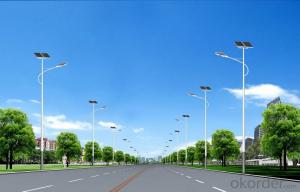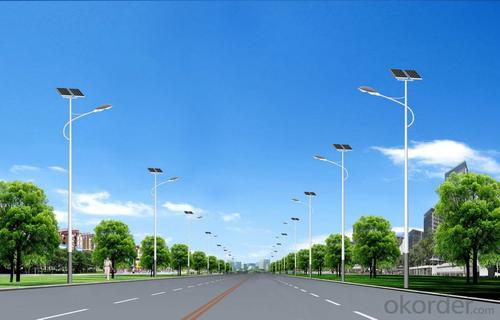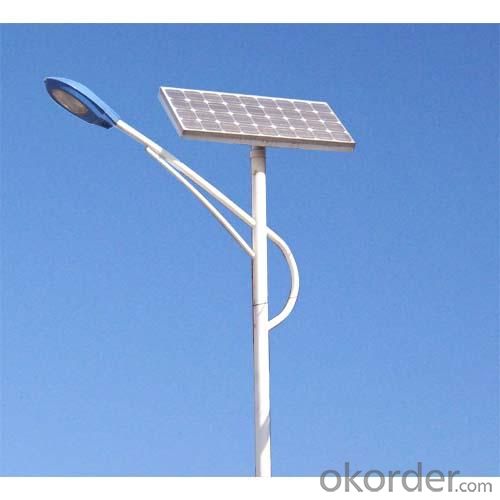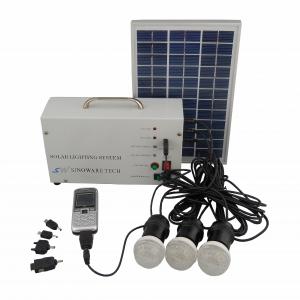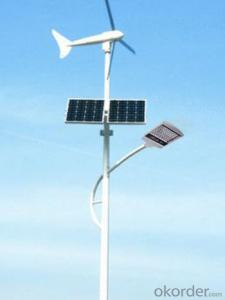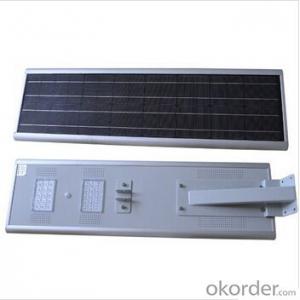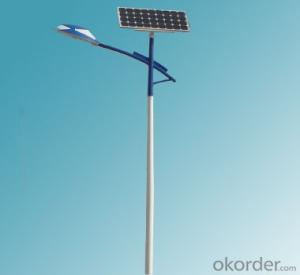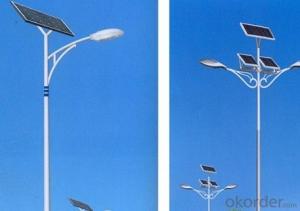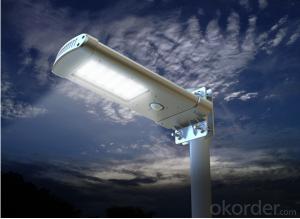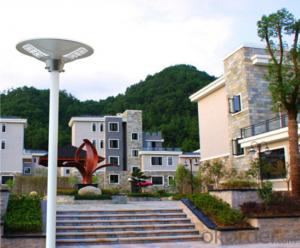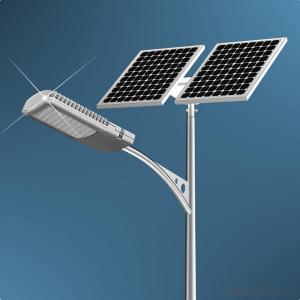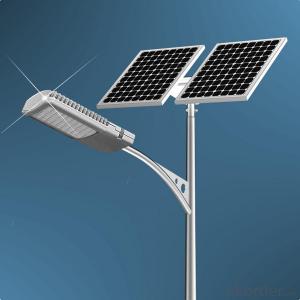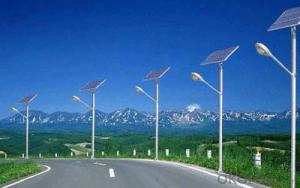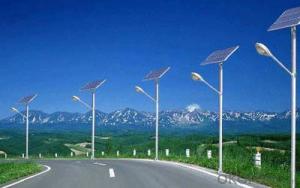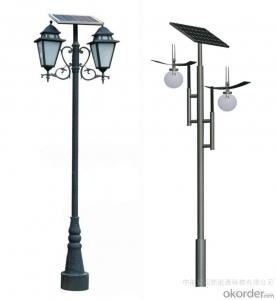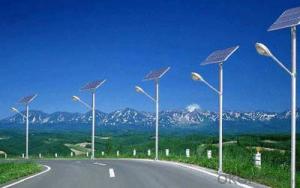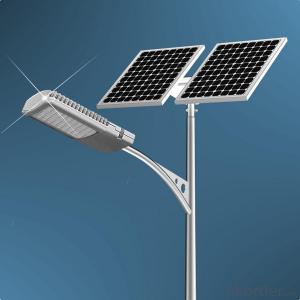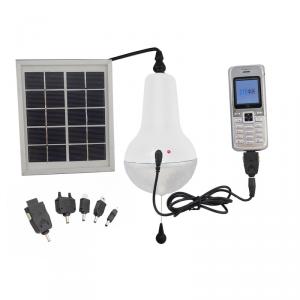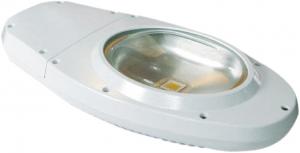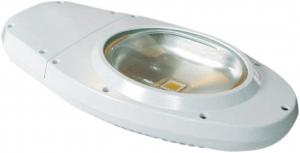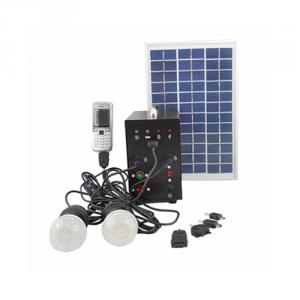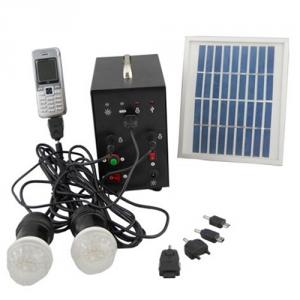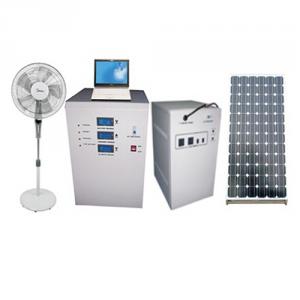Bird Bath Solar Light - Off Grid New Energy GW02 Solar Product
- Loading Port:
- Shanghai
- Payment Terms:
- TT OR LC
- Min Order Qty:
- 1 watt
- Supply Capability:
- 5000 watt/month
OKorder Service Pledge
OKorder Financial Service
You Might Also Like
1, Product desciption
Inverter circuits designed to produce a variable output voltage range are often used within motor speed controllers.
The DC power for the inverter section can be derived from a normal AC wall outlet or some other source. Control and feedback circuitry is used to adjust the final output of the inverter section which will ultimately determine the speed of the motor operating under its mechanical load.
Motor speed control needs are numerous and include things like: industrial motor driven equipment, electric vehicles, rail transport systems, and power tools. (See related: variable-frequency drive ) Switching states are developed for positive, negative and zero voltages as per the patterns given in the switching Table.
The generated gate pulses are given to each switch in accordance with the developed pattern and thus the output is obtained.
Solar power is energy from the sun. "Solar" is the Latin word for "sun" and
And Powerful source of energy. Without it, there will be no life.
Solar energy is considered as a serious source of energy for many years
of the vast amounts of energy that is made freely available, if harnessed by modern technology.
A magnifying glass can be used to heat up a small amount of water.
The short piece of copper tube is sealed at one end and filled with water.
And magnifying glass is then used to warm up the pipe.
Using more than one magnifying glass will increase the temperature more rapidly.
2, Features of the product
Inverters convert low frequency main AC power to higher frequency for use in induction heating.
To do this, AC power is first rectified to provide DC power. The inverter then changes the DC power to high frequency AC power. Due to the reduction in the number of DC Sources employed, the structure becomes more reliable and the output voltage has higher resolution due to an increase in the number of steps so that the reference sinusoidal voltage can be better achieved.
This configuration has recently become very popular in AC power supply and adjustable speed drive applications. This new inverter can avoid extra clamping diodes or voltage balancing capacitors. There are three kinds of level shifted modulation techniques, namely: 1,High and stable conversion efficienly based on over 4 years professional experience
2 ,High reliability with guaranteed +/-10% output power tolerance
3,Proven materials,tempered front glass,and a sturdy anodized aluminum frame allow modules to operate reliably in multiple mountily configurations
4,Combination of high efficicncy and attractive appearance
The first thing to figure out is the length of road in need of street lights.
This can be a small entrance road only a couple hundred of feet long to miles of streets through an area. Does the area currently have any type of lighting available.
What is the reason for needing street lights in this area
Is the electrical grid already nearby or would you need to call in the power company to bring in electrical lines.
If the electric needs to be brought to the area, how much is this going to cost? Depending on how far the grid electric is from the location of the needed lighting, this can be quite expensive.
How much lighting is needed on the street? Do the lights need to be dark sky compliant.
Do the street lights need to run from dusk to dawn or for only a specified number of hours at night.
Are the street lights able to dim in the middle of the night and still provide enough lighting.
These questions need to be answered before you can decide on how many lights you will need to complete the project.
3, Detailed Specification
Data Sheet of High Quality Solar Light
ModelTracer-1210RN
Rated system voltage12/24V auto work
Rated battery current10A
Rated load current10A
Max.battery voltage32V
Max.PV open circuit voltage100VDC
Max.PV input power12V 130W;24V 260W
Self-consumption<10ma(24v)< span="">
Charge Circuit Voltage<=0.26v< span="">
Discharge Circuit Voltage Drop<=0.15v< span="">
CommunicationTTL232/8 pin RJ45
Temp/compensation-30mV/℃/12V(25℃)
Working temperature-35℃~+55℃
Storage temperature range-35℃~+55℃
4, Product Image
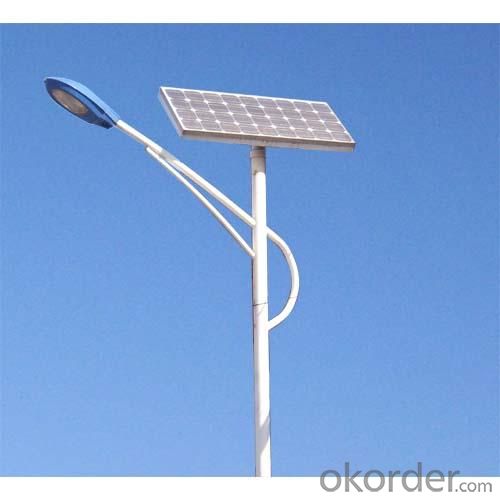
- Q: What happens if a solar light's battery dies?
- If a solar light's battery dies, it will not be able to store any solar energy and thus will not illuminate at night. The light will remain dim or completely off until the battery is replaced or recharged.
- Q: Can solar lights be used near water bodies?
- Yes, solar lights can be used near water bodies. Solar lights are designed to be safe and waterproof, making them suitable for installation near ponds, pools, rivers, or any other water bodies. They are often used to enhance the ambiance and safety of outdoor spaces near water.
- Q: Do solar lights have a built-in power backup system?
- No, solar lights do not typically have a built-in power backup system. They rely solely on the energy stored in their rechargeable batteries, which is replenished through sunlight during the day.
- Q: Can solar lights be used during power outages?
- Yes, solar lights can be used during power outages. Since solar lights rely on sunlight to generate electricity, they are independent of the power grid. This means that even when there is no electricity supply, solar lights can continue to function and provide illumination. Solar lights typically store the energy they generate during the day in rechargeable batteries, which can then be used to power the lights at night or during power outages. These lights are a reliable and sustainable option for emergency lighting during blackouts or other power disruptions.
- Q: Can solar lights be used as a deterrent against intruders?
- Yes, solar lights can be used as a deterrent against intruders. Solar lights are powered by the sun, which means they don't require any electricity or wiring. They can be easily installed in areas outside your property, such as the perimeter, entrances, or pathways, to provide illumination during the night. Well-lit areas are known to deter criminals as they prefer to operate in darkness and are less likely to approach a well-lit property. Solar lights can create the illusion of occupancy, giving the impression that someone is home even when you're away, which can further discourage potential intruders. Additionally, solar lights with motion sensors can be particularly effective as they will activate when someone approaches, alerting the homeowner and potentially scaring off any unwanted visitors. Overall, while solar lights alone may not guarantee complete security, they can certainly contribute to making your property less attractive to intruders and increase your overall safety.
- Q: Are solar lights easy to repair?
- Yes, solar lights are generally easy to repair. Most solar lights are designed with a modular construction, which means that individual components can be easily replaced if they malfunction. Common components that may need repair or replacement include batteries, solar panels, and LED bulbs. In many cases, these components can be easily purchased online or at a local hardware store, making the repair process convenient and cost-effective. Additionally, many solar lights come with user-friendly instructions or online tutorials that guide users through the repair process. With some basic troubleshooting skills and the right replacement parts, repairing solar lights can be a simple task for most individuals.
- Q: Can solar lights be used to light up a large area?
- Yes, solar lights can be used to light up a large area. However, the size of the area that can be effectively lit up by solar lights depends on various factors such as the brightness of the lights, the number of lights being used, and the quality of the solar panels and batteries. Solar lights are designed to harness the energy from the sun and convert it into electricity to power the lights. As long as there is sufficient sunlight during the day, the solar panels will charge the batteries, allowing the lights to function at night. To light up a large area, it is essential to choose solar lights with higher brightness levels and consider using multiple lights strategically placed throughout the area. Additionally, selecting solar lights with larger solar panels and higher-capacity batteries will ensure that they can store enough energy to illuminate the area for a longer period. It is important to note that solar lights may not be as powerful as traditional electric lights, so they might not provide the same level of brightness. However, advancements in solar technology have led to the development of more efficient and brighter solar lights, making them a viable option for lighting up larger areas. Ultimately, the effectiveness of solar lights in illuminating a large area will depend on the specific requirements of the area, the quality of the solar lights, and the availability of sunlight.
- Q: Can solar lights be used for outdoor sports field lighting?
- Indeed, outdoor sports field lighting can indeed utilize solar lights. By harnessing the power of solar panels, these lights efficiently convert sunlight into electricity, which can then be stored in batteries for nighttime usage. This feature renders solar lights an excellent choice for illuminating outdoor sports fields, as they obviate the necessity for conventional electrical connections and can function independently of the grid. Moreover, solar lights exhibit energy efficiency and environmental friendliness, as they curtail carbon emissions and reduce electricity expenses. Furthermore, their ease of installation and relocation endows them with adaptability for diverse sports field layouts. Nevertheless, it is crucial to consider the specific lighting requisites of the sports field and ensure that the chosen solar lights possess the appropriate brightness and coverage to adequately fulfill these demands.
- Q: How do solar lights handle electromagnetic radiation or interference?
- Solar lights are designed to handle electromagnetic radiation or interference through various methods. To begin with, they incorporate components such as filters and shields that minimize the impact of electromagnetic radiation. These components selectively permit certain frequencies of electromagnetic radiation to pass through while blocking or reducing others. This guarantees that solar lights remain unaffected by external electromagnetic interference. Furthermore, solar lights are often equipped with effective grounding and shielding techniques to provide additional protection against electromagnetic radiation. Grounding aids in diverting excess electrical charges or interference away from the solar lights' sensitive components, thus preventing any damage or malfunction. Shielding, on the other hand, involves the use of materials that can absorb or reflect electromagnetic radiation, effectively reducing its impact on the solar lights. Moreover, solar lights undergo thorough testing and comply with relevant electromagnetic compatibility (EMC) standards. These standards ensure that the solar lights can function properly in the presence of electromagnetic radiation and do not emit harmful levels of electromagnetic interference. In conclusion, solar lights are specially engineered to handle electromagnetic radiation or interference, ensuring their dependable operation and long lifespan.
- Q: How do I choose the right solar panel size for my solar lights?
- When it comes to choosing the right solar panel size for your solar lights, there are a few factors to consider. Firstly, you need to determine the amount of sunlight your location receives. The efficiency of solar panels is directly related to the amount of sunlight they can absorb. If you live in an area with ample sunlight throughout the day, you can opt for a smaller solar panel size. However, if your location has limited sunlight or experiences frequent cloudy days, it is advisable to choose a larger solar panel size to compensate for the reduced sunlight absorption. Secondly, consider the power requirements of your solar lights. Solar lights come in various wattages and power ratings. Determine the power consumption of your lights and match it with the solar panel size. It is important to choose a solar panel that can generate enough power to meet the energy demands of your lights, especially during periods of low sunlight or extended usage. Additionally, consider the size and design of your solar lights. Some solar lights have built-in solar panels, while others have separate panels connected through wires. If your lights have built-in panels, you cannot adjust the panel size. However, if you have separate panels, you have more flexibility in choosing the appropriate size. Lastly, consider your budget. Larger solar panels tend to be more expensive than smaller ones. It is crucial to find a balance between the size of the solar panel and your budget. Assess your energy needs and weigh the cost-effectiveness of different panel sizes. In summary, choosing the right solar panel size for your solar lights involves considering the sunlight availability, power requirements, design of the lights, and your budget. By taking these factors into account, you can make an informed decision and ensure optimal performance of your solar lights.
Send your message to us
Bird Bath Solar Light - Off Grid New Energy GW02 Solar Product
- Loading Port:
- Shanghai
- Payment Terms:
- TT OR LC
- Min Order Qty:
- 1 watt
- Supply Capability:
- 5000 watt/month
OKorder Service Pledge
OKorder Financial Service
Similar products
Hot products
Hot Searches
Related keywords
